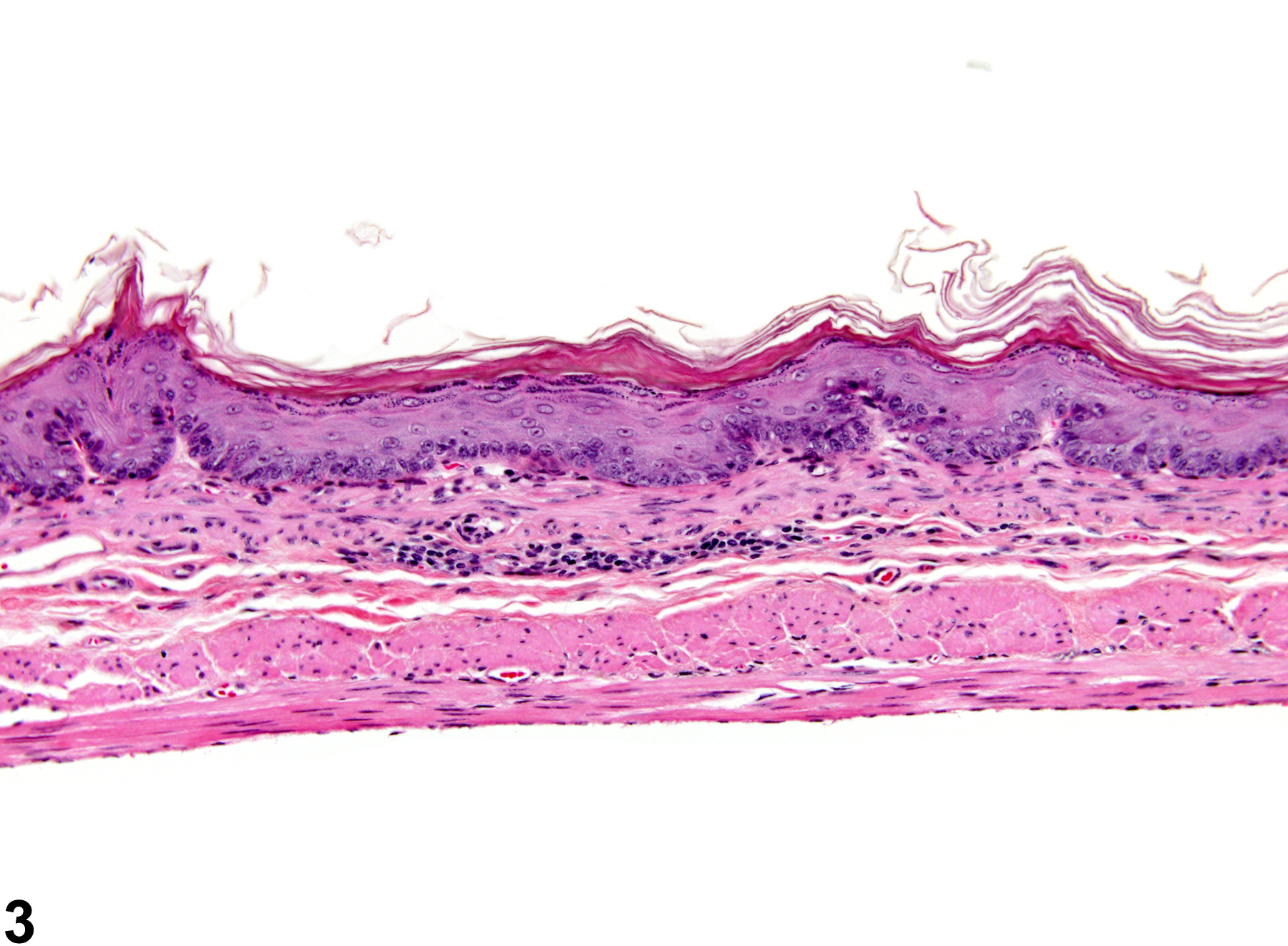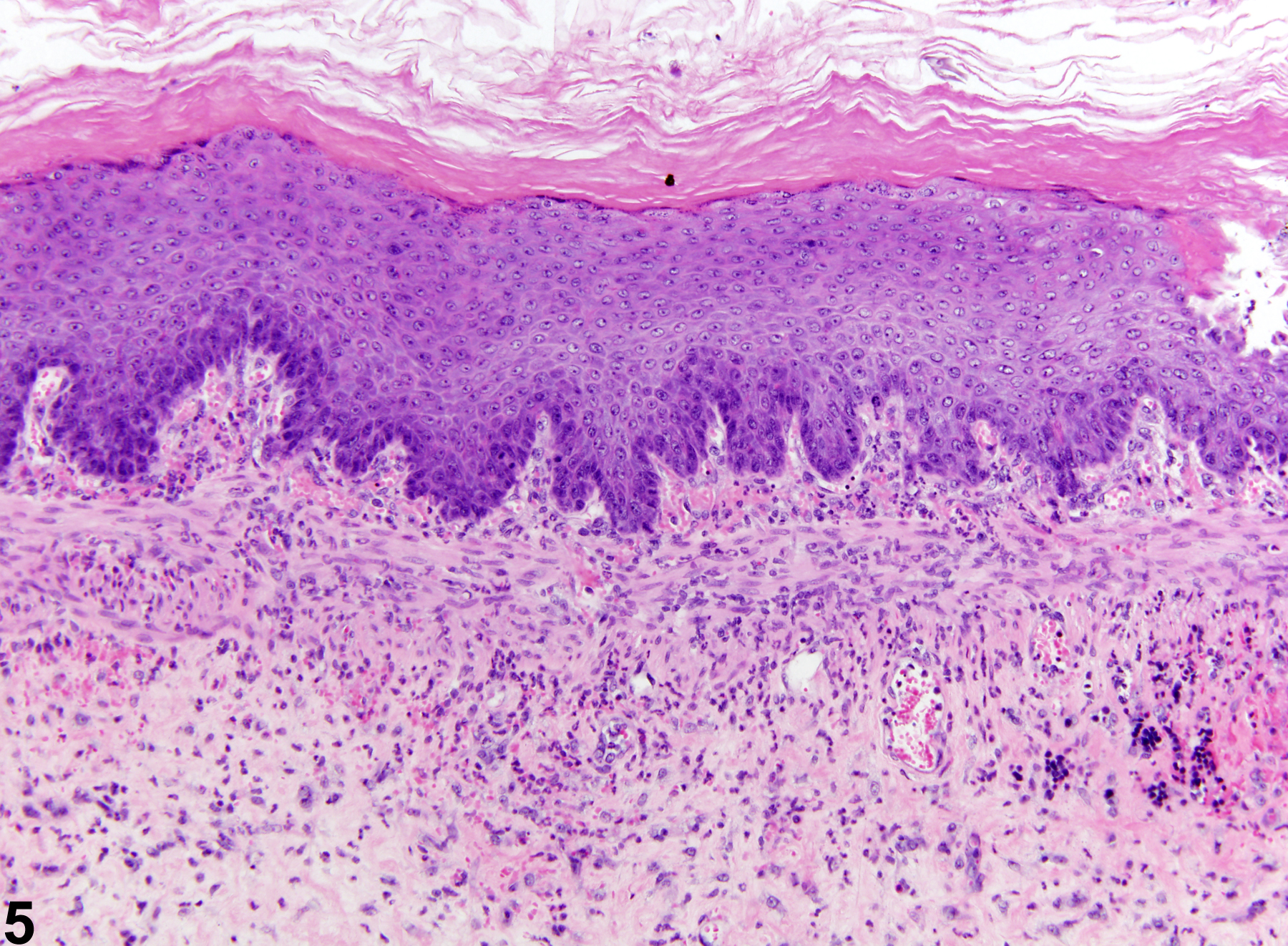Alimentary System
Stomach, Forestomach - Inflammation
Narrative
Leininger JR, Jokinen MP, Dangler CA, Whiteley LO. 1999. Oral cavity, esophagus, and stomach. In: Pathology of the Mouse (Maronpot RR, ed). Cache River Press, St Louis, MO, 29-48.
Abstract: http://www.cacheriverpress.com/books/pathmouse.htm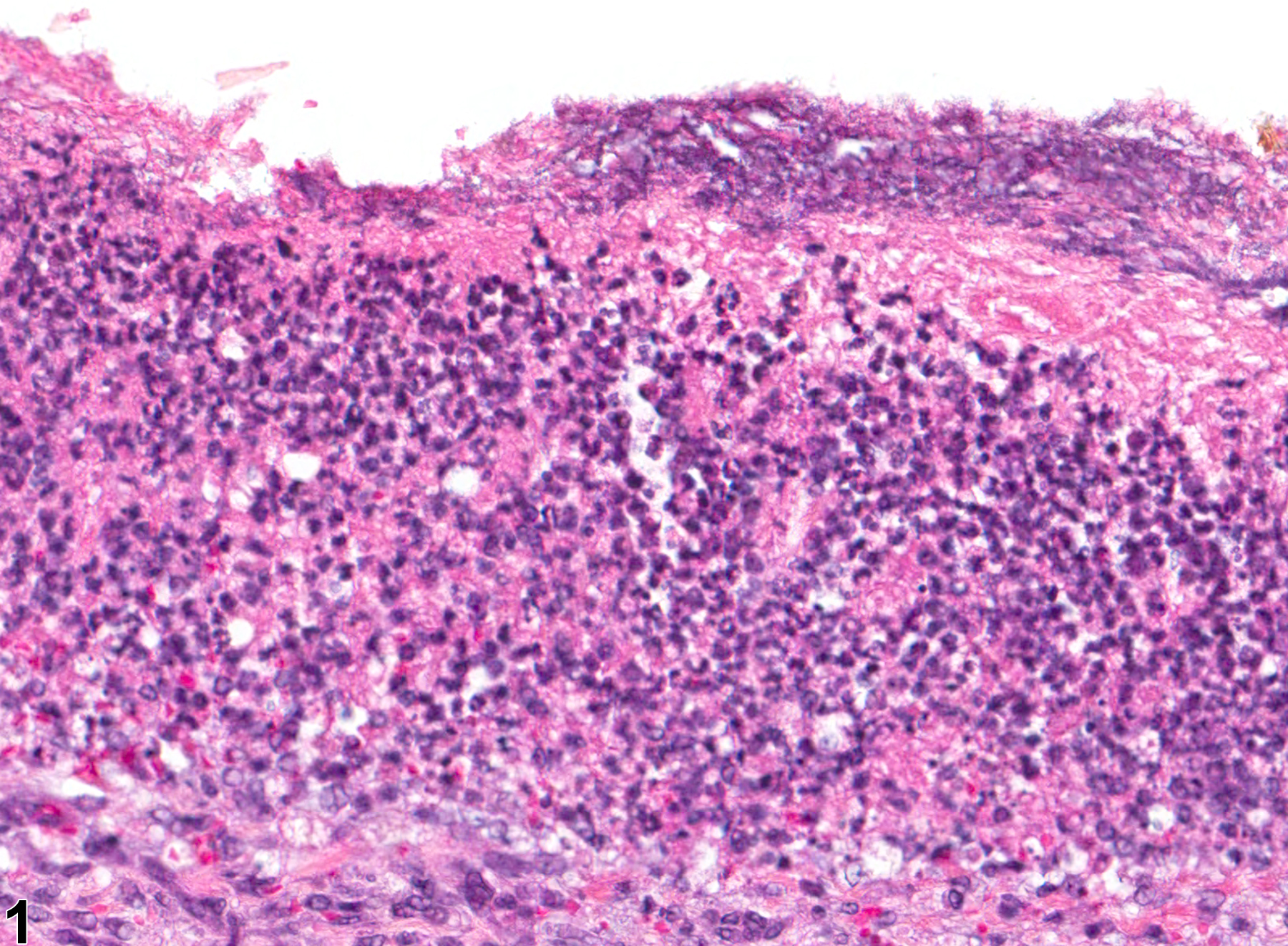
Stomach, Forestomach - Inflammation, Suppurative in a male F344/N rat from a chronic study. This suppurative inflammation is associated with an ulcer.
All Images
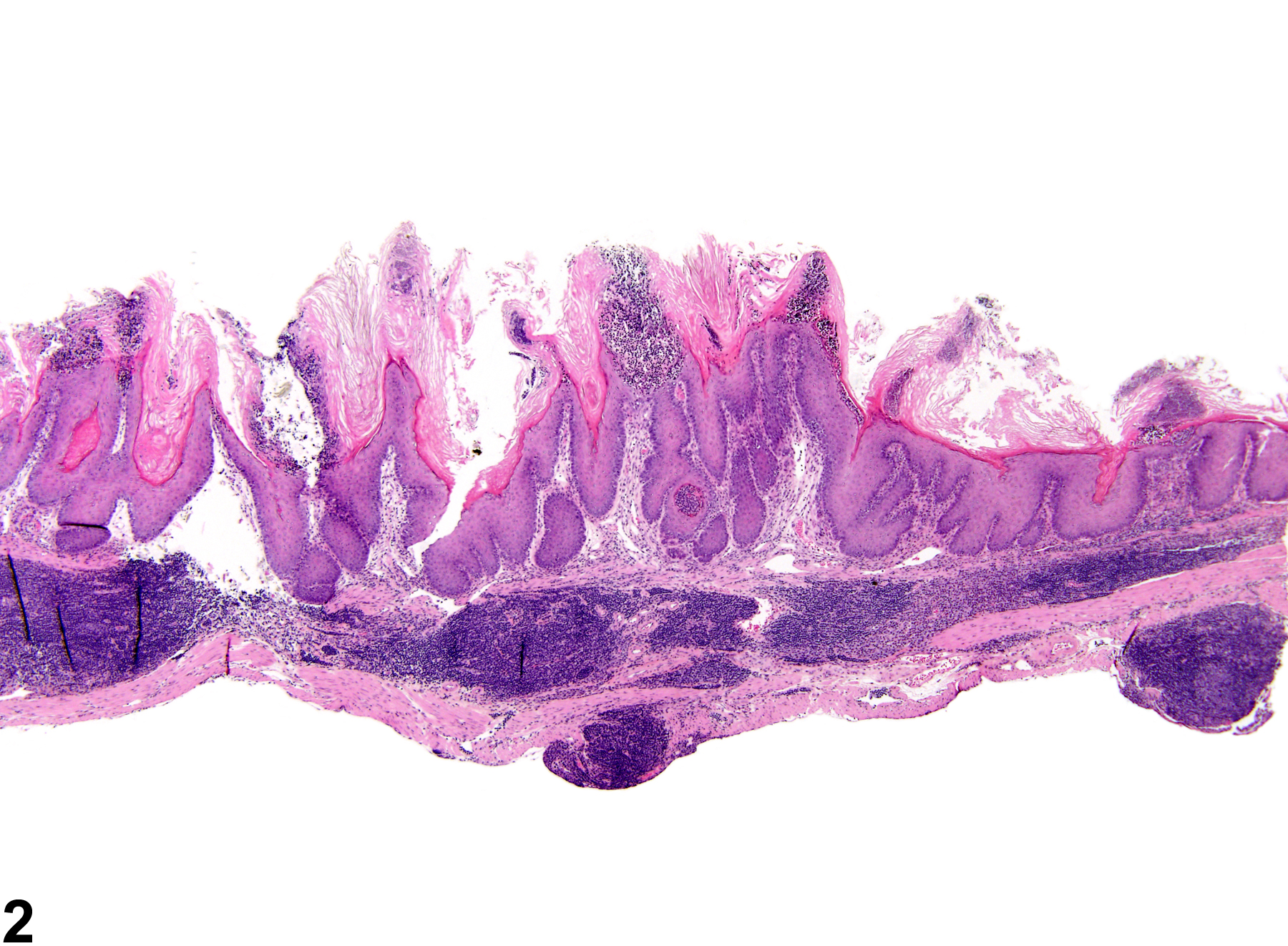
Stomach, Forestomach - Inflammation, Chronic in a female B6C3F1 mouse from a chronic study. Numerous lymphocytes are present in the submucosa and serosa, often forming nodules or follicles similar to gut-associated lymphoid tissue. The overlying epithelium is hyperplastic and contains suppurative inflammation.
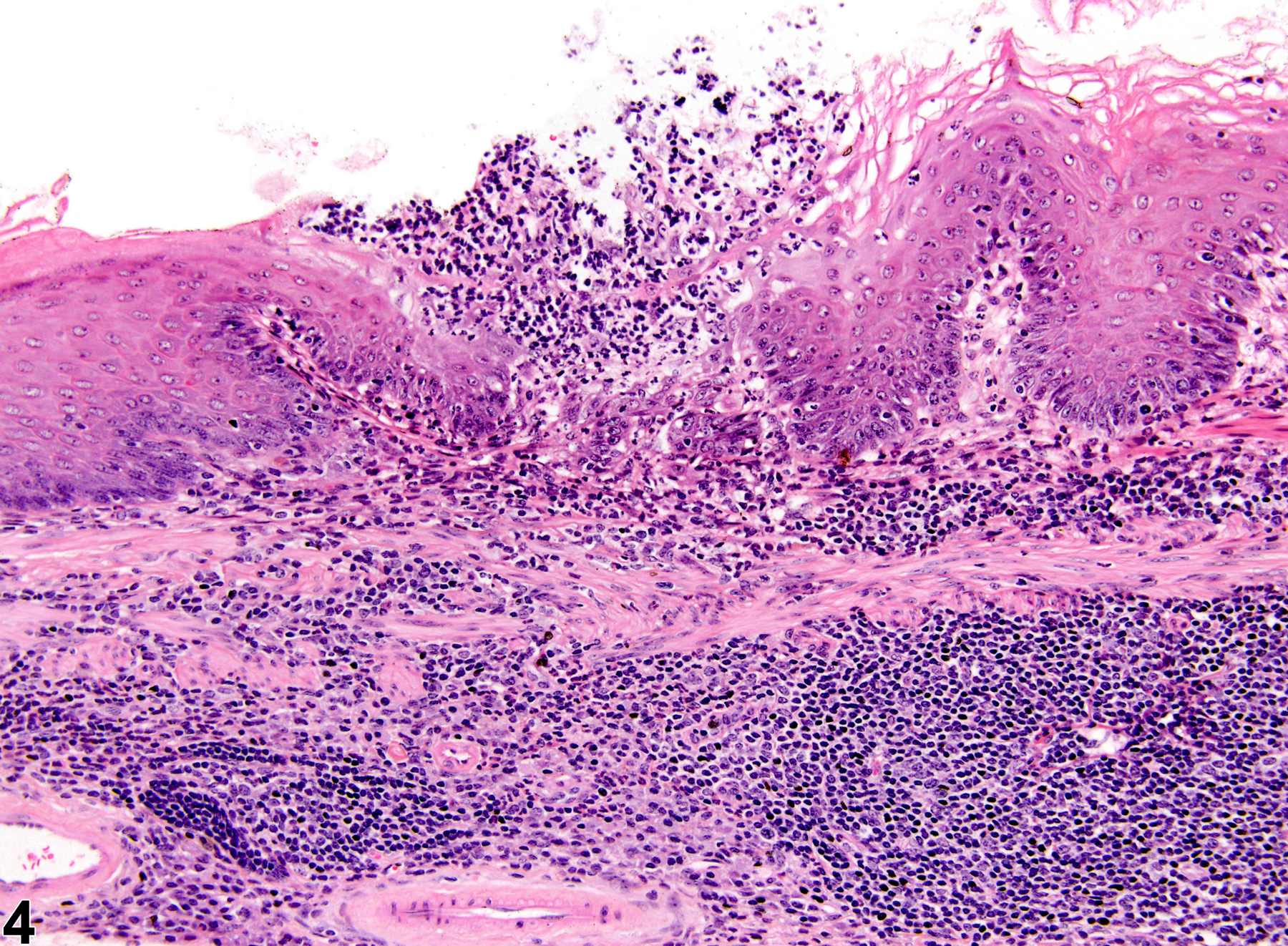
Stomach, Forestomach - Inflammation, Chronic active in a female B6C3F1 mouse from a chronic study. Numerous lymphocytes, macrophages, and neutrophils are present within the submucosa; the overlying squamous epithelium of the stomach is hyperplastic and ulcerated and contains suppurative inflammation.



